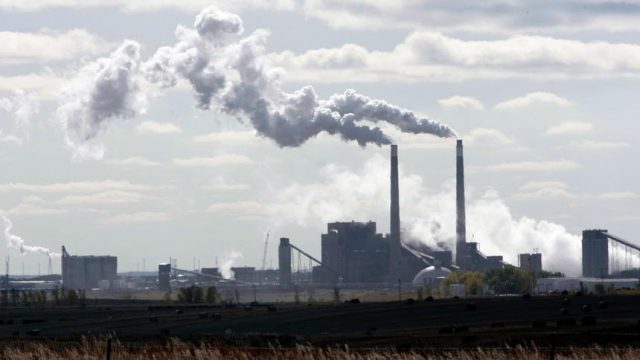Jason Bohrer: Coal Kept the Heat and Lights on During the Polar Vortex

The Great River Energy Coal Creek Station coal plant near the Falkirk mine outside of Underwood, N.D., is the largest power plant in North Dakota Michael Vosburg / Forum Photo Editor
This guest post was submitted by Jason Bohrer, President and CEO of the Lignite Energy Council.
During the Polar Vortex 2019, otherwise known in North Dakota as a “cold snap”, it’s a great time to talk about three concepts: reliability, dispatchability and resilience. Reliability is related to the ability of a power source to be producing power when it’s needed. Dispatchability is the ability to move electricity to where it is needed, and resilience is the ability to respond to extreme situations favorably.
 Right now, only two major fuel sources are reliable, dispatchable and resilient: coal and nuclear. In the Plains region, supplied through MISO, coal is right now providing 49 percent of the electricity and operating at 73 percent of its installed capacity. It’s reliable, dispatchable and resilient.
Right now, only two major fuel sources are reliable, dispatchable and resilient: coal and nuclear. In the Plains region, supplied through MISO, coal is right now providing 49 percent of the electricity and operating at 73 percent of its installed capacity. It’s reliable, dispatchable and resilient.
Even more so in North Dakota, where our power plants are right next to the coal mines, meaning there are no transportation bottlenecks.
North Dakota’s power plants are providing thousands of megawatts of power to the grid right now. The region’s nuclear facilities likewise are providing 13 percent of the electric needs and using 85 percent of their capacity. Although all coal facilities are resilient, lignite and nuclear share the attribute of fuel security—neither relies upon pipelines or rail for their fuel supplies.
Now, when we look at natural gas, although gas plants are providing 25 percent of MISO’s electric needs, residential gas is suffering from a “dispatchability” problem.
Thousands of Minnesota residents have been asked to turn down their thermostats and switch to more reliable and dispatchable electric space heaters to stay warm (and that electricity is coming from coal, gas, nuclear, wind, etc.) Factories in the Midwest have been closed down because they can’t get natural gas to their facilities.
So although in most circumstances gas is reliable, dispatchable and resilient, right now it’s behind coal when it comes to resilience, and the ability to cope with such an extreme event.
Wind is providing 7 percent of the electricity in MISO right now, but is operating at 34 percent of its capacity. Wind is never really a dispatchable resource, but the 7 percent that is feeding into the grid right now is helping keep people warm, particularly as folks are relying upon electric space heaters due to gas constraints.
Compounding the issue with wind is that it’s less dispatchable when temperatures fall into the teens (and more) below zero—meaning the wind might be blowing but the energy can’t be captured and dispatched to where it’s needed. As for resilience, a single wind farm is not resilient, since it’s completely at the mercy of local conditions.
MISO has somewhat compensated for this by spreading over a wide geographic region, meaning whatever wind is being produced at any given time is fairly resilient, but since that is wholly dependent upon the weather, it’s hard to say it’s as resilient as coal or nuclear.




